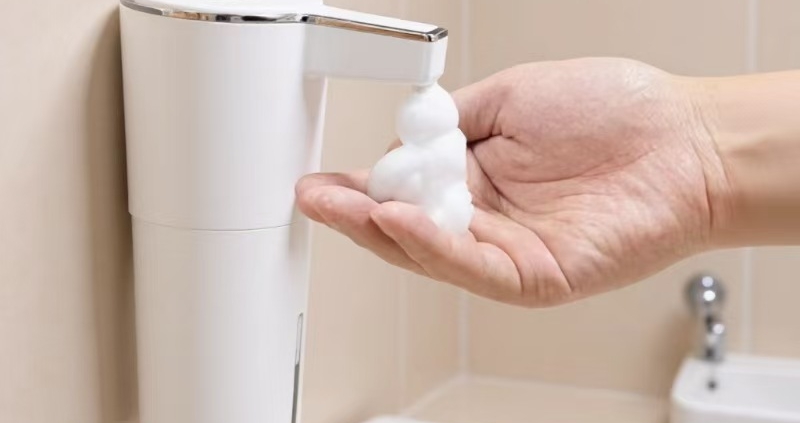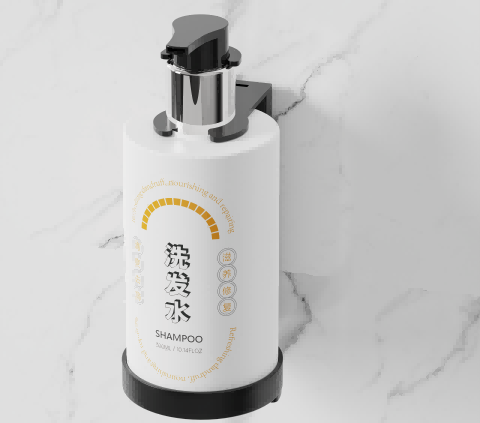In the hyper-competitive world of hospitality, the smallest details often write the most significant reviews. While grand lobbies and luxurious bedding capture the initial booking, it’s the minute, daily interactions with a hotel’s amenities that truly shape a guest’s lasting impression. Among these, the humble soap dispenser stands as a silent sentinel in the bathroom—a frequently used item that, when it fails, can become a disproportionate source of frustration.
A negative comment about a soap dispenser is rarely just about the soap. It’s a proxy for perceived cleanliness, attention to detail, and overall operational excellence. Instead of waiting for these complaints to roll in, proactive hotels are performing “negative review first aid”—a series of smart, cost-effective upgrades that transform this everyday item from a liability into an asset.
Let’s diagnose the most common guest complaints and prescribe actionable, high-ROI solutions.
Complaint #1: “It’s a Soap Avalanche or a Dribble!”
The Root Cause: A one-size-fits-all approach to dosage is a recipe for waste and dissatisfaction. The amount of soap needed by an adult for a full hand wash differs vastly from what a child needs, or what a guest uses for a quick rinse.
The Upgrade Prescription:
-
The Hardware Fix: The most effective solution is to retrofit or replace existing pumps with adjustable dispensers featuring 3-4 dosage settings. This allows management to calibrate the perfect amount:
-
Low Setting: Ideal for children’s areas, public restrooms, or for less viscous liquid.
-
Medium Setting: The standard for most adult guests in guest rooms.
-
High Setting: For kitchen-facing staff or in areas where heavy soilage is common.
-
-
The Behavioral Nudge: A simple, elegantly designed placard next to the dispenser that reads, “One press is all you need for perfect hygiene,” works wonders. It politely guides guest behavior, reduces product waste by up to 30%, and prevents the aggressive pumping that leads to mechanical failure.
Complaint #2: “It’s Slippery When Wet—I Almost Dropped It!”
The Root Cause: Most dispensers are made of slick, injection-molded ABS plastic. When combined with wet hands and soap residue, they become a safety hazard and a usability nightmare.
The Upgrade Prescription:
-
The Grip Enhancer: Invest in custom or off-the-shelf silicone sleeves or grips. Choose colors that complement your bathroom’s design scheme—think muted tones, sophisticated greys, or even branded colors. This low-cost add-on provides a secure, comfortable grip and elevates the product’s aesthetic.
-
The Material Choice: For new purchases, prioritize dispensers with a matte or textured finish. This surface is inherently non-slip and resists fingerprints and water spots, maintaining a cleaner appearance.
-
The Stability Solution: For countertop or standalone units, a common complaint is tipping over. A simple fix is to add a weighted base (a small, adhered metal or dense plastic disc) to lower the center of gravity and prevent spills.
Complaint #3: “It Smells Funky—Like It Wasn’t Cleaned Before Refilling.”
The Root Cause: This is the cardinal sin of dispenser management and a direct indicator of a broken process. The foul, sour odor is caused by bacterial growth and rancid soap. This occurs when new soap is added on top of old residue, creating a breeding ground for microbes in the moist, dark container.
The Upgrade Prescription:
-
The Process Overhaul: Implement and strictly enforce a “Weekly Deep-Clean Protocol.” This must be non-negotiable: staff must empty the dispenser entirely and clean the inner container with a 1:1 solution of white vinegar and warm water to disinfect and break down residue. The container must be fully dried before refilling. The practice of topping off must be banned.
-
The Technological Aid: Source dispensers with “Anti-Microbial Interior Liners” or cartridges. These are infused with silver-ion technology that actively inhibits the growth of bacteria and mold, ensuring product purity.
-
The Product Selection: Opt for fragrance-free or minimally preserved, high-quality liquid soap. Strong, artificial fragrances are often used to mask low-quality ingredients, and simpler formulas are less prone to separation and spoilage.
Complaint #4: “The Sensor is Useless—I Had to Wave My Hand Like a Conductor!”
The Root Cause: Sensor failure erodes trust in a hotel’s technological promises. Issues typically stem from low batteries, environmental interference (like direct sunlight), or a dirty sensor window clouded by soap dust and grime.
The Upgrade Prescription:
-
The Environmental Audit: Check the installation site. Ensure the dispenser is not in the direct path of strong infrared light from windows or spotlights, which can “blind” basic infrared sensors.
-
The Tech Upgrade: For high-traffic areas or properties serious about reliability, invest in dispensers with dual or hybrid sensing technology (Infrared + Microwave). Microwave sensors detect motion through the plastic shell, making them less susceptible to optical interference and much more responsive.
-
The Maintenance Ritual: Include “Wipe Sensor Window” as a mandatory step in the daily housekeeping checklist. A quick wipe with a soft, dry cloth maintains optimal sensor performance.
The Bigger Picture: Creating a Culture of Continuous Improvement
Solving these specific issues is the first step. The next is building a system to proactively capture feedback and drive continuous refinement.
Implement a Soap Dispenser Feedback Loop:
Create a simple form, digital or physical, for staff and guests to report issues easily.
Sample Template: Dispenser Performance Log
-
Date & Location: [e.g., Room 412, 3rd Floor Gym]
-
Issue Observed:
-
Dispensing (Too Much / Too Little / Inconsistent)
-
Leaking / Clogged
-
Sensor Not Working
-
Unpleasant Odor
-
Slippery / Difficult to Use
-
Empty / Low
-
-
Action Taken: [e.g., Replaced cartridge, cleaned sensor, reported for repair]
-
Further Notes: [e.g., “Guest mentioned stickiness.”]
This data is invaluable. It helps identify recurring problems with specific models or in certain locations, informs future purchasing decisions, and demonstrates a commitment to evidence-based operational excellence.
Conclusion: An Ounce of Prevention
In the end, performing “first aid” on your soap dispensers is not about the soap itself. It’s a powerful demonstration of a hotel’s commitment to the guest experience. These small, strategic investments in hardware, process, and training pay massive dividends in perceived quality, reduced waste, and, most importantly, silenced critics. By mastering this small but critical touchpoint, you send a clear message: we pay attention to everything, because your comfort is our everything. Don’t let a few ounces of liquid soap sink a five-star review.




